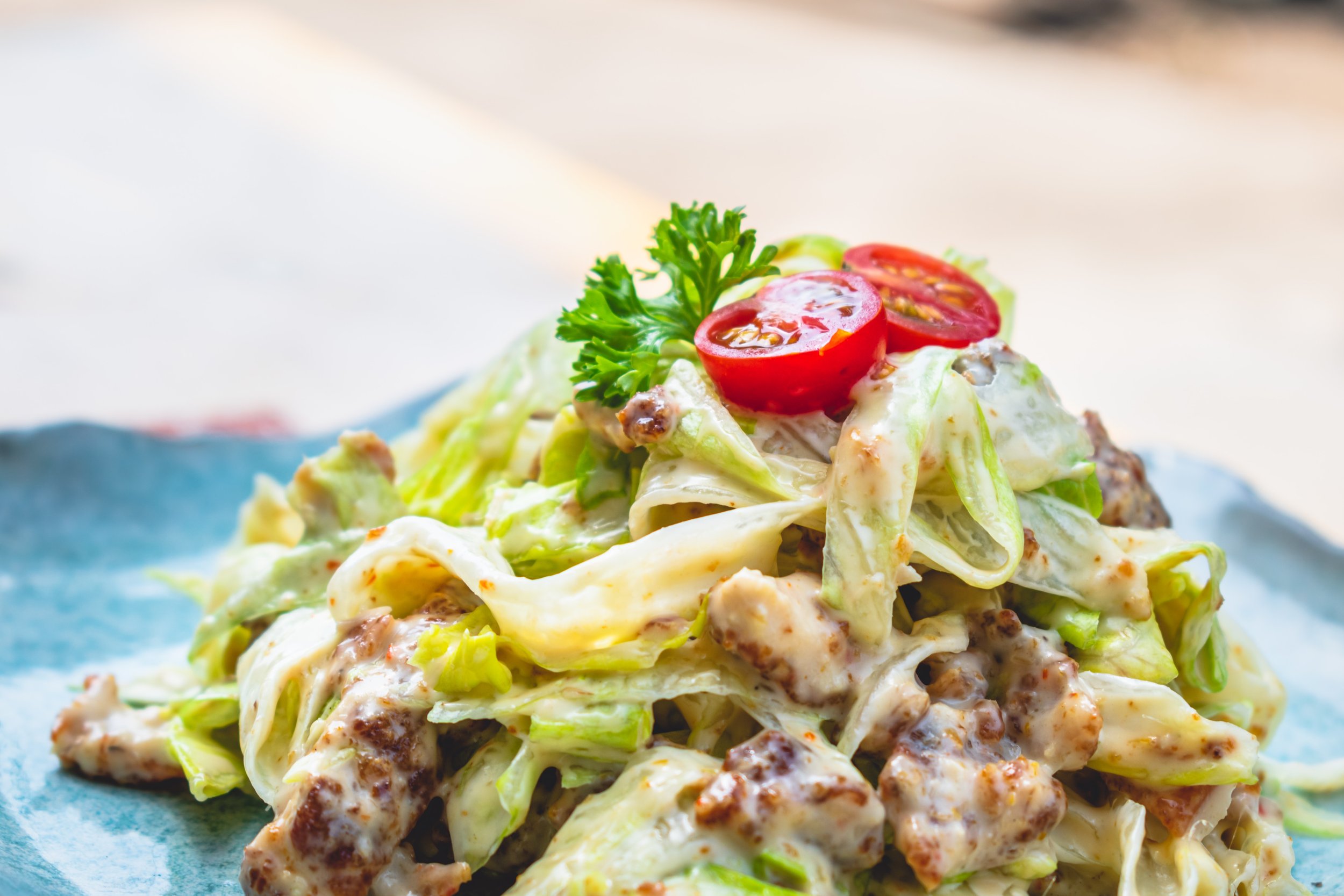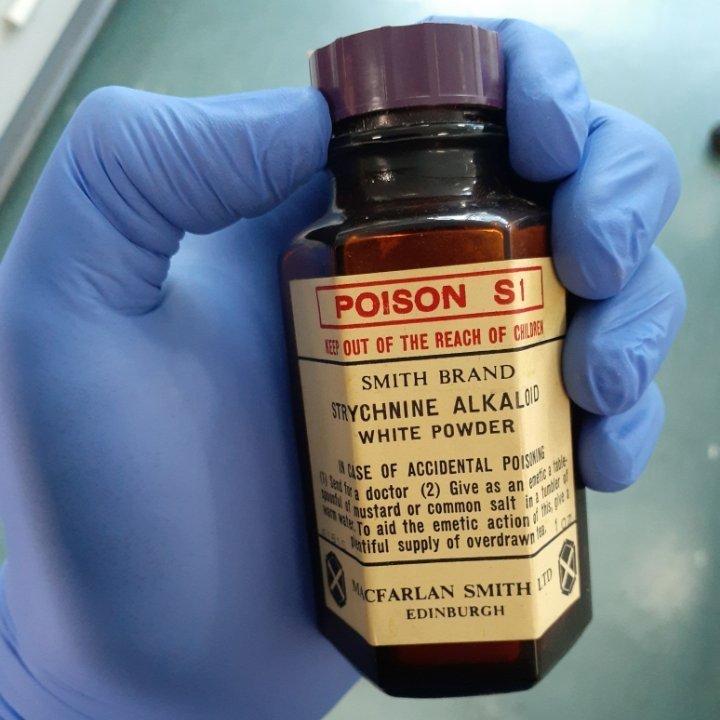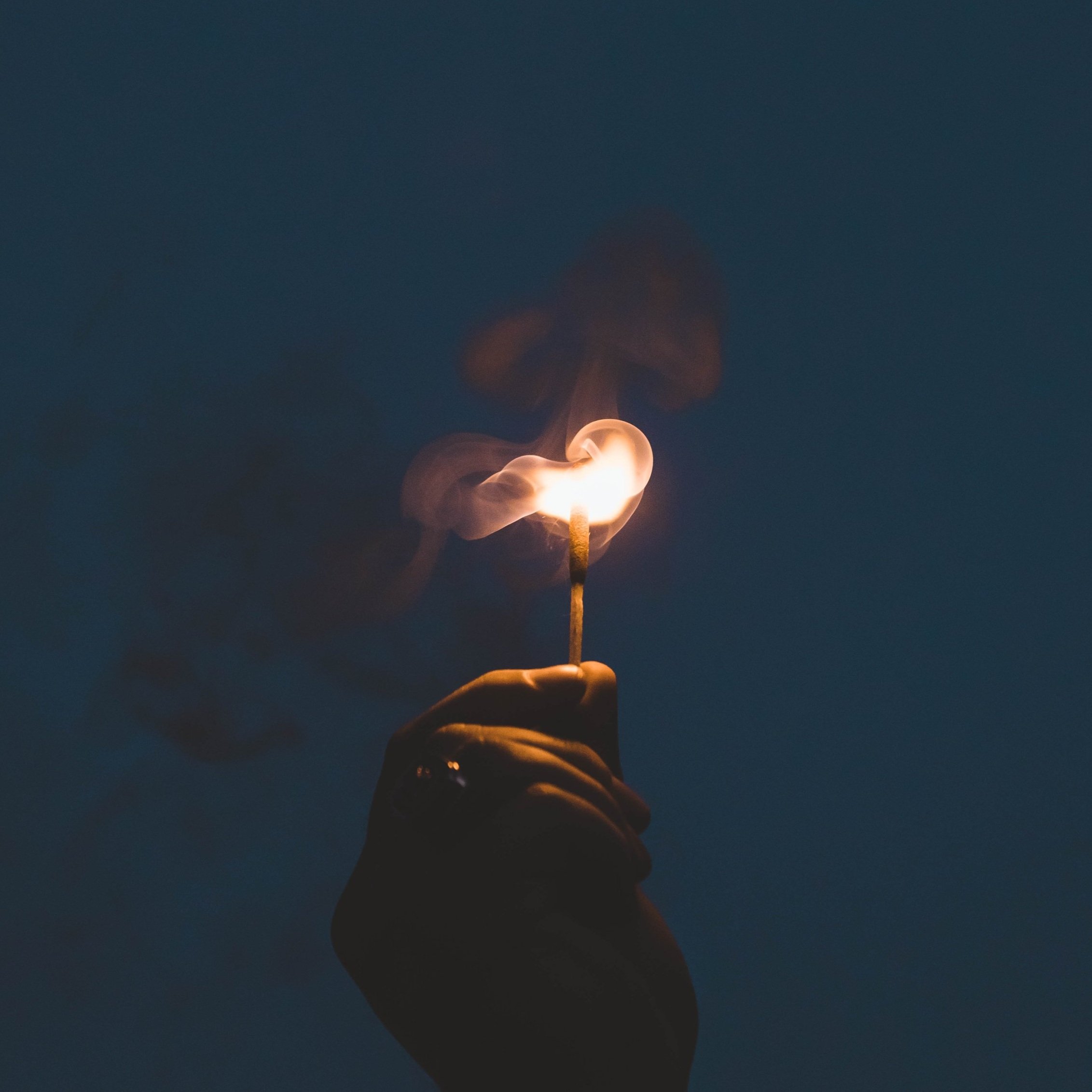science Communication
Photo by JESHOOTS.COM on Unsplash
THE CONVERSATION - VINEGAR AND BAKING SODA: A cleaning hack or just a bunch of fizz?
Vinegar and baking soda are staples in the kitchen. Many of us have combined them in childhood scientific experiments: think fizzy volcanoes and geysers.
But people also frequently mix vinegar and baking soda to produce a reportedly effective household cleaner. Unfortunately, the chemistry behind the bubbly reaction doesn’t support the cleaning hype. The fizzy action is essentially a visual placebo, formed by the combination of an acid and a base.
So, how does it work, and is it worth using these chemicals for cleaning? To understand all this, it helps to know a little more about chemistry.
7 February 2024 interview on the science and chemistry of crystals with David Astle.
NATIONAL afternoons with JACINTA PARSONS - ABC RADIO
28 December 2023 Interview on the science of salad dressings with Jacinta Parsons.
Photo by ABHISHEK HAJARE on Unsplash
THE CONVERSATION - THE SCIENCE OF THE IDEAL SALAD DRESSING
Summer means salads. And salads are even more delicious with a good dressing.
Most salad dressings are temporarily stable mixtures of oil and water known as emulsions.
But how do salad dressing emulsions form? And how can we enhance our emulsions for better salads and more?
TASmanian afternoons with andy gall - ABC RADIO HOBART
21 December 2023 Interview on the chemistry of gravy. Due to scheduling, the interview was combined with a Q&A session with Dr Karl Kruszelnicki.
12295 Gravy boat filled with rich hot gravy - this image by freefoodphotos is licensed under a Creative Commons Attribution 3.0 Unported License.
THE CONVERSATION - HOW TO MAKE GRAVY (USING CHEMISTRY)
“Gravy Day” is a relatively new date in the Australian calendar. Paul Kelly’s song How to Make Gravy tells the story of a prisoner (Joe) writing to his brother on December 21. Joe laments missing the family Christmas celebrations and asks who will make gravy for the roast lunch in his absence.
While a roast may not be everyone’s idea of the perfect Christmas feast, “Gravy Day” does give the opportunity to discuss the chemistry involved in making gravy – a thickened sauce made from drippings collected from roasted meats…
Photo by Nathan Kilah.
COSMOS MAGAZINE - poisoners paradise
Make no mistake. Hundreds of people and animals were killed to bring you this story. Poisons are all around us, as are people with motives to use them for their hostile and cruel intentions.
At the molecular level, poisons are chemicals typically with very specific functions. In my professional life as a chemist I’ve handled many, including well-known substances like cyanide, carbon monoxide and mercury; war gases such as chlorine and arsenicals; and toxic alkaloids such as strychnine and nicotine. Many of these chemicals are reactive, which makes them useful tools in producing new molecules. Others have special properties that help in isolating other desirable molecules. Working with these chemicals takes preparation, good laboratory engineering, imaginative risk management (nerve!), and genuine humility and respect for the dangers in front of you.
THE CONVERSATION - A new TikTok trend has people drinking toxic borax. An expert explains the risks – and how to read product labels
A potentially dangerous trend has gained prominence on TikTok, with a number of people mixing borax into water and drinking it for supposed health benefits.
This isn’t new. Social media platforms have been host to many dangerous “challenges” – and users have been dosing themselves with questionable substances for years.
There’s no evidence to support the latest claims about borax. So how dangerous is it? And how can we assess the safety of the many other substances we use in daily life?
Photo by engin akyurt on Unsplash
Photo by Lama Roscu on Unsplash
THE CONVERSATION -How does ice cream work? A chemist explains why you can’t just freeze cream and expect results
Ice cream seems like a simple concept. Take some dairy, add some sugar and flavours, and freeze.
But to get a perfectly creamy, smoothly textured frozen treat, we need more than just a low temperature – it takes a careful interplay of chemistry and three states of matter: solid, liquid and gas.
Photo by Eugene Krasnaok on Unsplash
THE CONVERSATION - How to make the perfect pavlova, according to chemistry experts
with Chloe Taylor
The pavlova is a summer icon; just a few simple ingredients can be transformed into a beautifully flavoured and textured dessert.
But despite its simplicity, there’s a surprising amount of chemistry involved in making a pavlova. Knowing what’s happening in each step is a sure-fire way to make yours a success.
So exactly what does it take to make the perfect pavlova? Let us break it down for you.
Photo by Kelly Neil on Unsplash
COSMOS MAGAZINE - EGGcellent chemistry
There are few foods as nutritionally rich and versatile as the humble egg. These nutrient and chemical stocked packages are excellent scrambled, poached, or fried, and are essential in cakes, puddings, soufflé, quiche, ice creams, sauces, drinks, cosmetics, and more. But what is it about the humble egg that makes it such a versatile ingredient and scientifically useful object?
Photo by Louis Reed on Unsplash
THE CONVERSATION - Visually striking science experiments at school can be fun, inspiring and safe – banning is not the answer
with Prof. Peter Rutledge
To a young mind, science can be magical. Perhaps you remember a visually striking or seemingly inexplicable scientific demonstration from your own youth?…
Scientists and science teachers often make use of dramatic demonstrations to capture the attention of young, impressionable minds, to inspire and to teach. But sometimes these experiments go wrong.
Photo by Nathan Dumlao on Unsplash
The Conversation - WHy ‘best before‘ food labelling is not best for the planet or your budget
with Dr Louise Grimmer
UK supermarkets have removed “best before” dates on thousands of fresh food products in an effort to reduce food waste.
One of the major supermarket chains, Sainsbury’s, is replacing these labels with product messaging that says “no date helps reduce waste”.
Apples, bananas, potatoes, cucumbers and broccoli are among the most wasted foods. Removing “best before” labels from these foods alone will reduce waste by an estimated 50,000 tonnes a year.
In Australia we produce 7.6 million tonnes of food waste every year – about 300kg per person. About 70% of what we throw out is still edible. Why aren’t we following the UK’s example?
Photo by Gilles San Martin - Wikimedia Commons
COSMOS MAGAZINE - VARROA - and the threat of bee decimation - has now arrived. what have we learned form other nations’ devastation?
Just three short weeks ago the bee parasite Varroa destructor was detected in Newcastle, NSW.
Beekeepers and government bodies have sprung into action to establish eradication, surveillance, and notification zones for areas surrounding colonies with identified mites...
What are these dreaded mites, why are they so feared – and now that they’re here, possibly to stay, how can beekeepers deal with them? Paywalled.
EVENINGS WITH SARAH MACDONALD - ABC RADIO SYDNEY
18 July 2022 The Chemistry of Food Preservation.
MORNINGS WITH INDIRA NAIDOO - ABC RADIO SYDNEY
21 April 2022 Can you eat chocolate with white stuff on it?
The Conversation - What's the white stuff on my Easter chocolate, and can I still eat it?
Republished by ABC Online, Stuff.co.nz, Seven News, Nine News, Lifehacker and more!
The words “chocolate” and “disappointment” don’t often go together.
But you may have experienced some disappointment if you’ve ever unwrapped the bright foil of an Easter egg to discover white, chalky chocolate inside. What is this white substance? Is it mould? Bacteria? Is it bad for you? Can you still eat it?!
The answer is yes, you can! It’s called “bloom” and it’s caused by fats or sugar from the chocolate. To understand why it forms, and how to avoid it forming, we need to consider the chemistry of chocolate…
COSMOS MAGAZINE - can a crystal change your life?
The newspaper pull-out headline asked a simple question: “Can a crystal change your life?” As a chemist and crystallographer, my answer is a resounding yes. Though not in the way you may be expecting – and also not in the way that the article was suggesting.
Crystals are essential to our modern lives, but we seldom recognise their presence. Some are obvious – the crystals of salt and sugar in our kitchens, for example. But others are less visible. In fact, crystals contribute to our transportation, the transmission of information, our enjoyment of food, our health and wellbeing, and much more… Paywalled.
Photo by Krystal Ng on Unsplash.
Photo by Elza Kurbanova on Unsplash
Cosmos magazine - cold and creamy chemistry
Ice cream seems like a simple concept: take cream or milk and make it cold enough to freeze. But in reality this frozen treat we know and love is one of the most complex food products available. There’s a lot of chemistry going on in a single scoop. Excerpt available.
The year is 1911, and a young man by the name of Thomas Midgely Jr. is graduating university with a degree in engineering. Thomas doesn’t know it yet, but he will have a greater impact on the Earth’s atmosphere than any other single organism. He will help create two world-changing chemical inventions that will improve the lives of many, and negatively change two parts of our ecosystem in the process with decades-long consequences…
Image: https://festivalofbrightideas.com.au/
FESTIVAL OF BRIGHT IDEAS 2022 - BETTER LIVING THROUGH CHEMISTRY STAGE SHOWS
Our lives depend on Chemistry even if we don't know it. Find out how you can improve your life through reactions you can try at home (and reactions you definitely shouldn't try at home!). Six shows over the two days of the festival.
COSmos magazine - Sweet science
There’s a bee buzzing about 10 centimetres from my eyes, back and forth, distracting me from looking for her royal mother. She wants me to leave, and will give her life to scare me away. Her plunging stinger can deliver a biochemical attack that will cause me pain and discomfort for days (fortunately not everyone reacts as strongly as me), and will rally her sisters to sting as well to defend their hive.
The pheromone signal that draws worker bees to attack is part of a network of chemical products and transformations that govern a colony’s success. I got into bee-keeping for the honey and through my interest in being somewhat self-sufficient, but along the way I’ve become fascinated with bees’ social structure and what amazing chemists they are…
Photo by Wolfgang Hasselmann on Unsplash
Photo by Erwan Hesry on Unsplash
COSmos magazine - The Science of Fireworks
The back of Launceston-based pyrotechnician Tony Sumner’s shirt reads: “Pyrotechnician. If you see me running, try to keep up.” It’s an old joke, but it makes sense. Fireworks are dangerous things. Seemingly harmless sparklers caused over 500 emergency room visits in the US in 2018. At times, even the professionals get things wrong. In San Diego in 2012, a 7000-firework, 17-minute Independence Day display was fired in a ferocious – and blinding – 30 seconds.
Fireworks are integral to many cultural celebrations: what would Chinese New Year, New Year’s Eve or the Fourth of July be without them? I’ve found that demonstrations combined with professional firework displays are a great way to engage the community with chemistry. To paraphrase the American physicist Richard Feynman, the beauty isn’t just at the larger scale, but also in the smaller dimensions, and how they work together…
Photo by Dave Herring on Unsplash
The Conversation - Curious Kids: when I swipe a matchstick how does it make fire?
When I swipe the matchstick how does it make fire? Thank you. – Laura, aged 5, Brisbane.
I’m glad you asked this, Laura. I have been interested in the science of fire and fireworks for a long time, and can tell you there is a lot happening in the very short time it takes to light a match.
But first I want to give an important warning: matches are dangerous and they shouldn’t be used without supervision. You can hurt yourself, your friends and family, destroy your home, or damage the environment.
Now, let’s get back to the science…


















